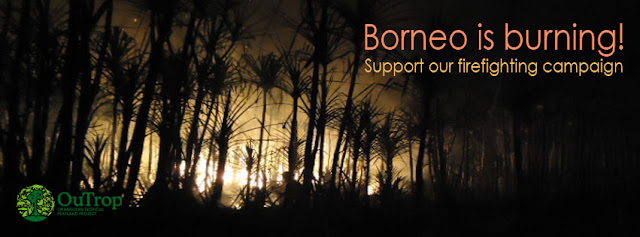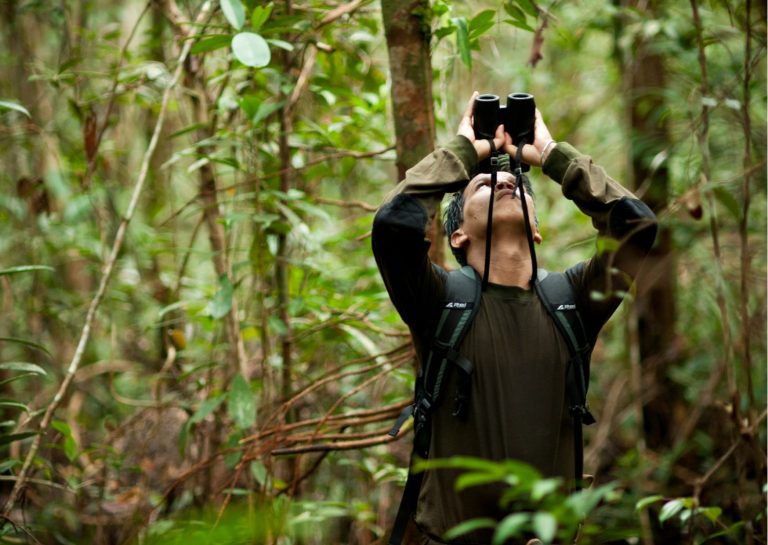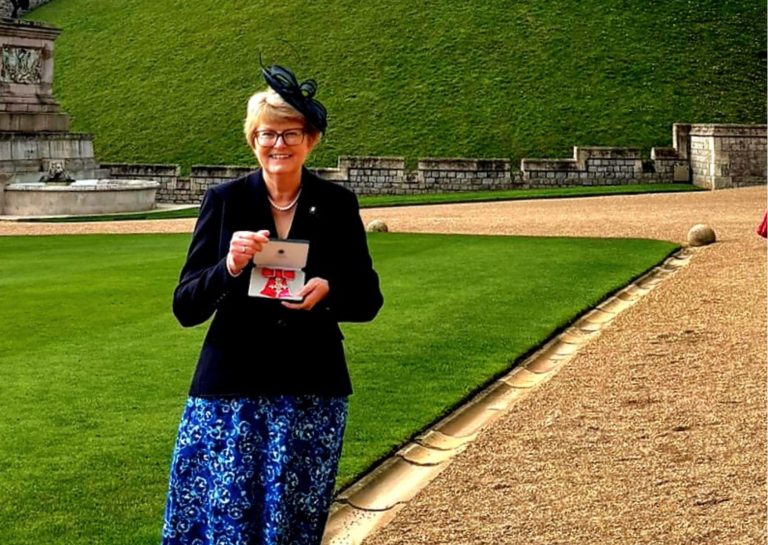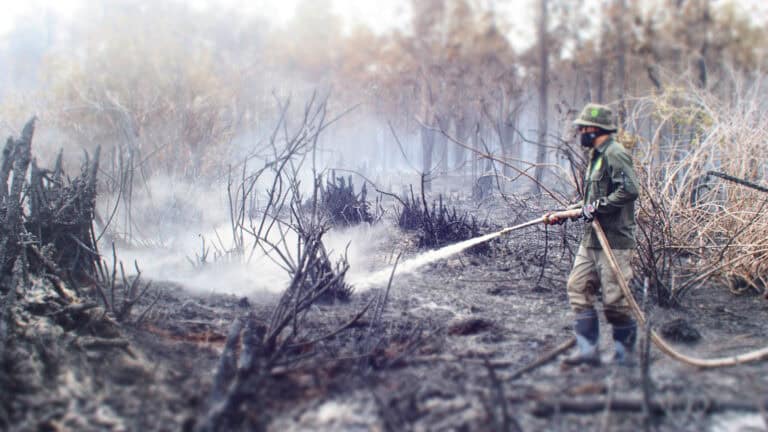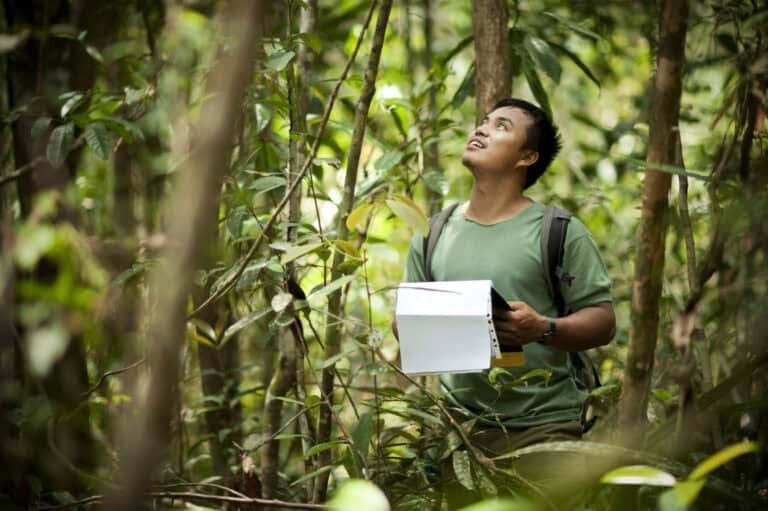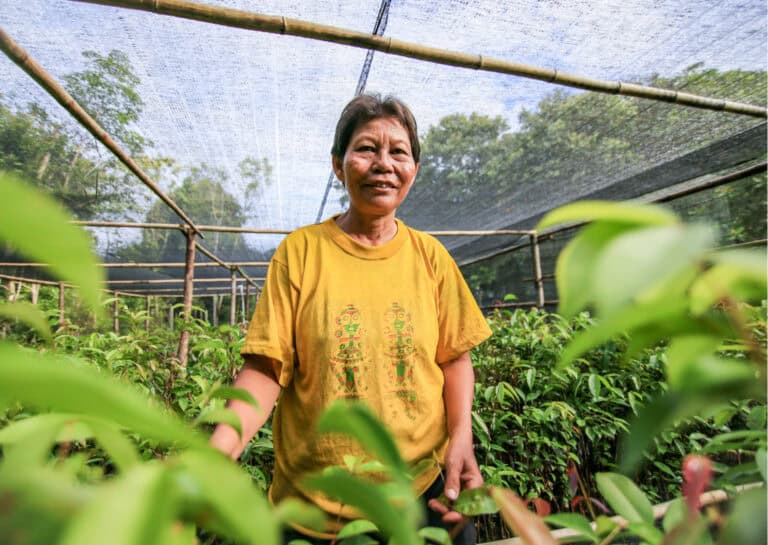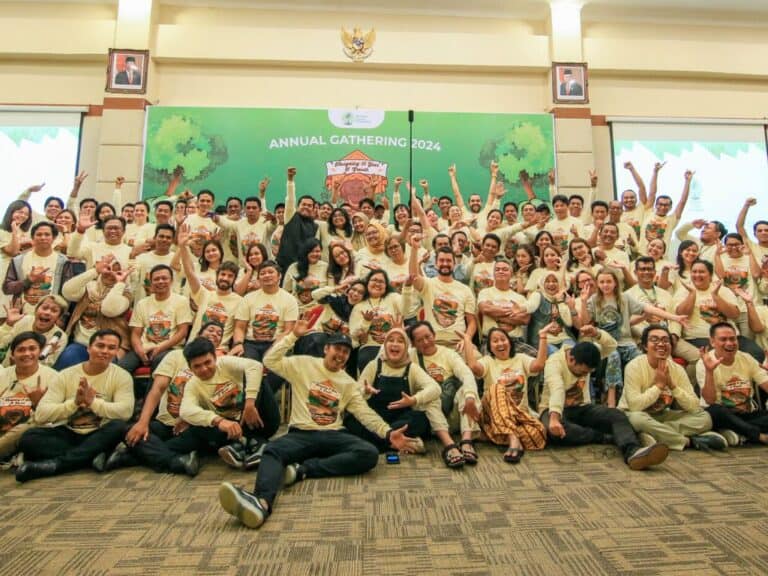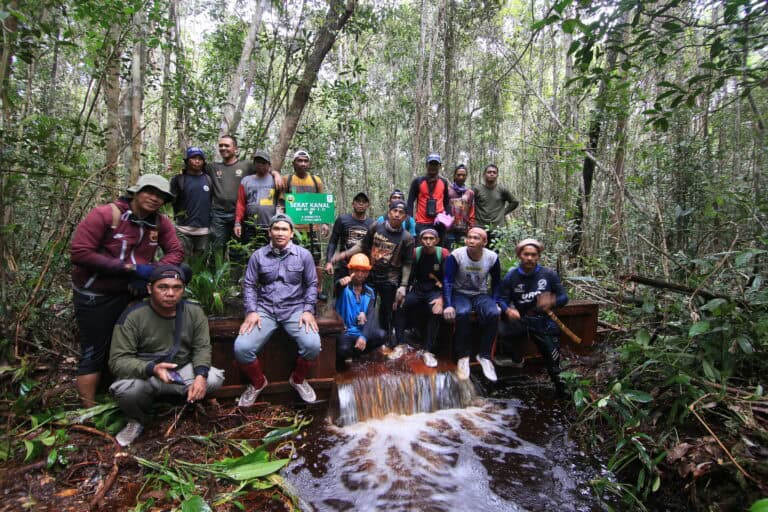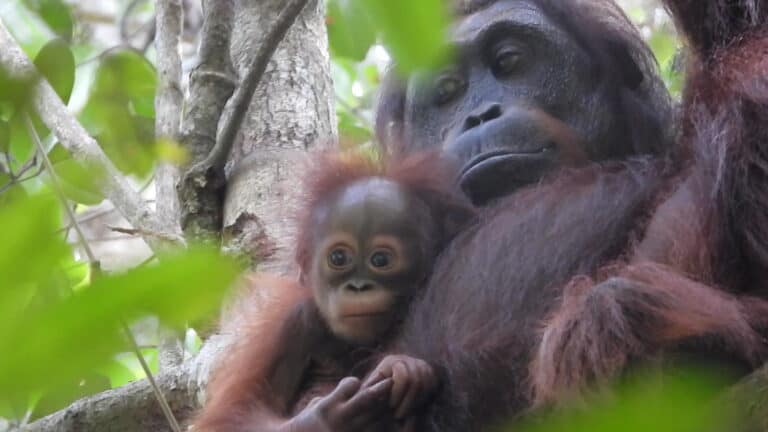We recently talked about why Indonesia’s peatlands are so susceptible to fire when drained. While this creates the underlying conditions, when fire can become established and spread, there is also a very clear influence of rainfall on the incidence and severity of fires in the region.
| Peatland fire near the Sabangau Forest this month. Photo by Suzanne Turnock/OuTrop |
Borneo experiences a natural wet and dry season. In the Sabangau Forest, the wet season typically occurs from around September-May and May-September for the dry season. The exact start and end dates of the seasons, and the amount of rainfall, can vary dramatically between years. For example, the 2006 dry season was 6 months long, whereas the following dry season in 2007 was only 3 months long. Many factors contribute to this variation, but the most important is the El Niño Southern Oscillation (ENSO).
ENSO is driven by changes in sea surface temperatures (SST) in the Pacific Ocean. Under normal conditions, SSTs are high in the western Pacific around Indonesia and low in the eastern Pacific. Evaporation is greater under higher SSTs and so the “normal” condition is of high rainfall in Indonesia.
In an El Niño event, the normal trade winds that create the West Pacific Warm Pool relax and this area of warm water moves east across the Pacific. This leads to wetter than normal conditions in the western Pacific and dry conditions in Indonesia and Australia. All El Niño events are not the same and vary substantially in strength, with particularly strong events occurring in 1982-83 and 1997-98, which are the years in which the most severe fires were experienced in Indonesian Borneo.
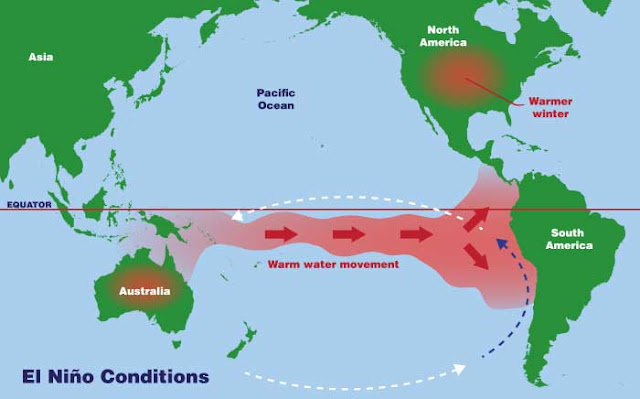 |
| Image by SciJinks from NASA and NOAA |
Returning to our earlier example of changing seasons in Sabangau, the long dry season in 2006 experienced a weak El Niño event, and the short dry season year experienced weak “opposite” or La Niña conditions, in which SSTs and rainfall levels are higher than normal in Indonesia.
An El Niño event is underway at the moment in the Pacific. This is predicted to persist throughout the northern hemisphere winter and into the spring, and is currently comparable in strength to the El Niño event of 1997-98, which experienced the worst fires seen in Indonesia.
Climate forecasts are never 100% certain, and we very much hope that these forecasts are wrong and the rain returns soon. But, it appears that a long, hard season of firefighting lays ahead to protect important peat-swamp forest habitats, like Sabangau.
To support BNF and local firefighting efforts in Borneo, click here.

